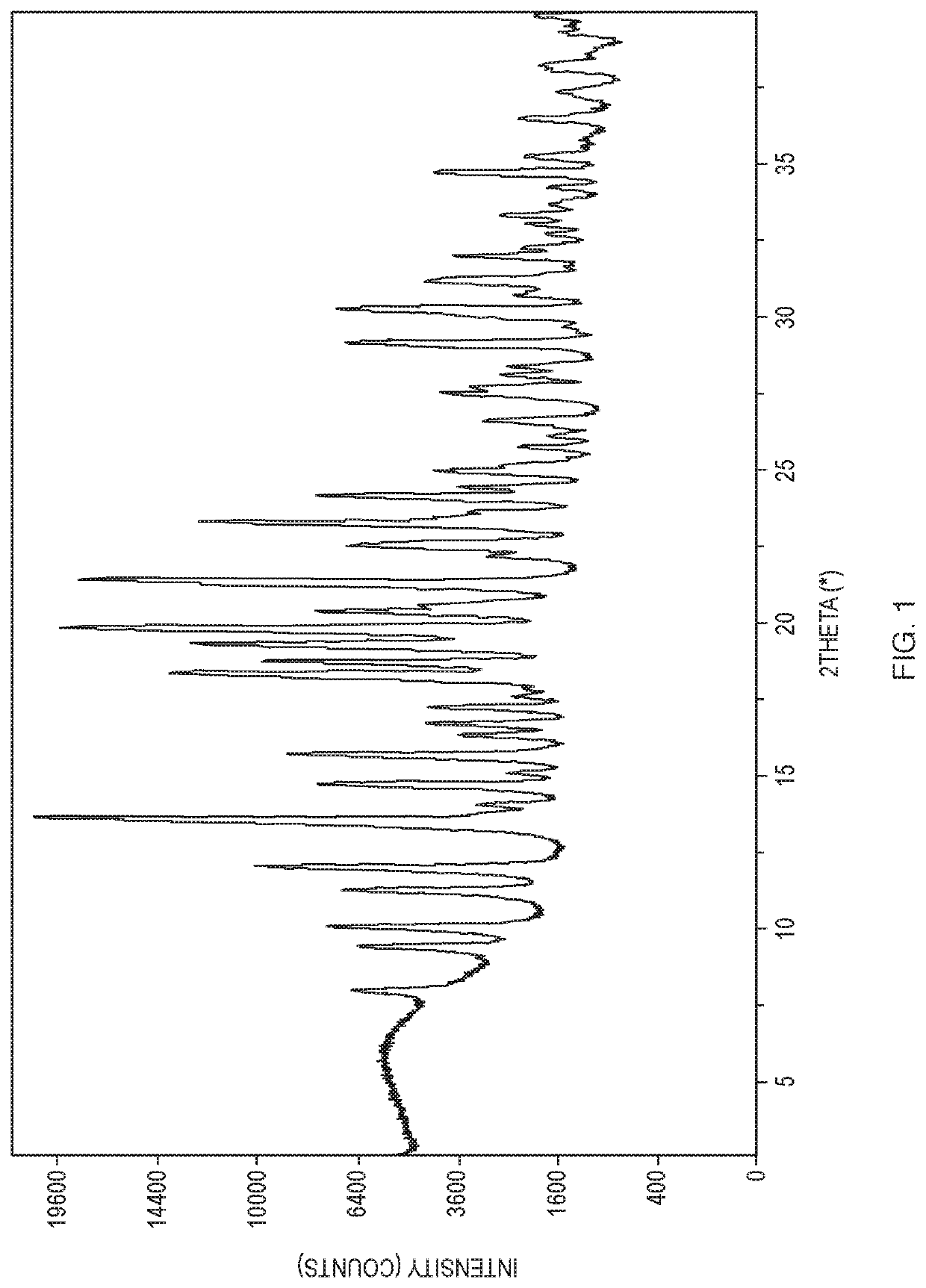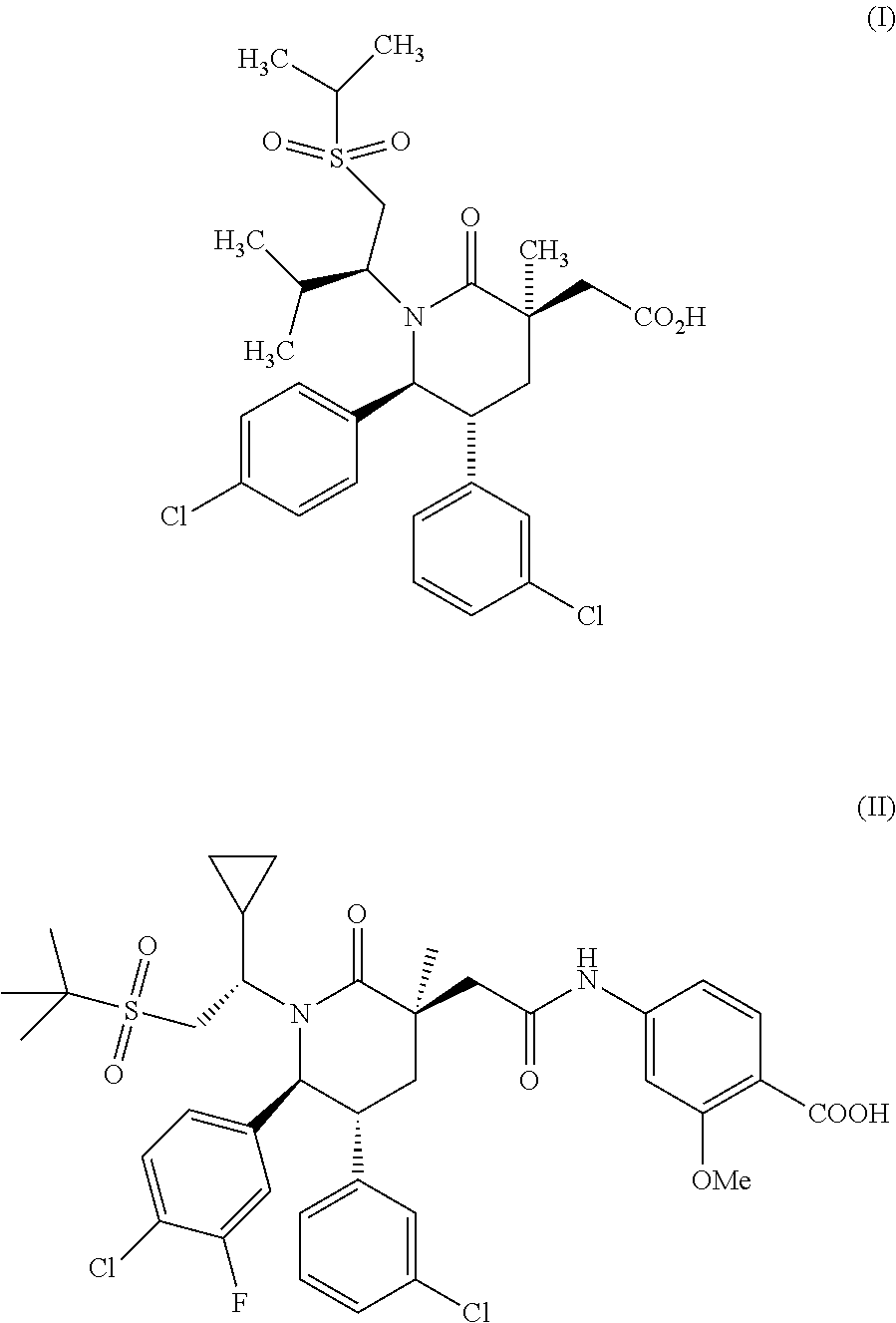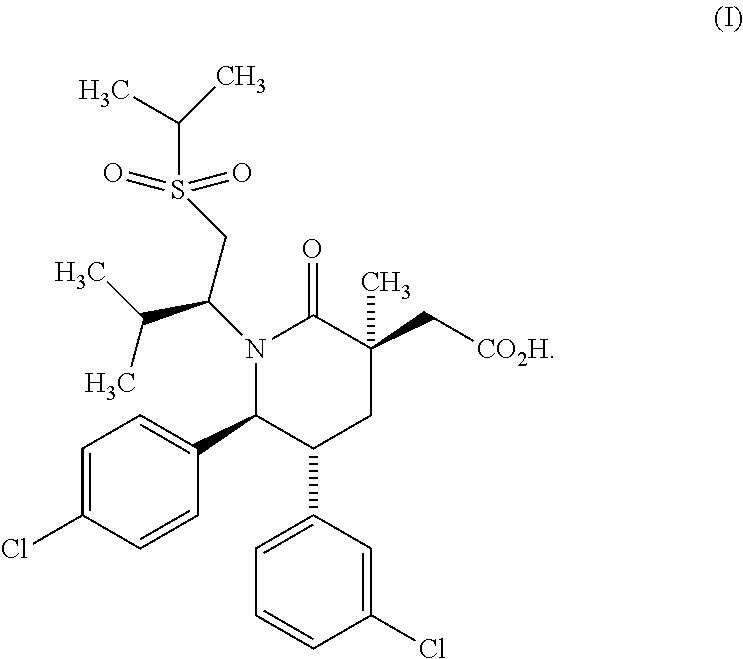Methods of Treating Myeloproliferative Neoplasms
a technology of myeloproliferative neoplasms and treatment methods, which is applied in the direction of blood cell cancer vaccines, drug compositions, peptide/protein ingredients, etc., can solve the problems of mpn-bp patients with a particularly dismal prognosis
- Summary
- Abstract
- Description
- Claims
- Application Information
AI Technical Summary
Benefits of technology
Problems solved by technology
Method used
Image
Examples
example 1
f the Combination of the Compound of Formula (I) with a Therapeutic Agent on Polycythemia Vera Cells
[0505]The procedure of testing the effects of the combination of the compound of Formula (I) with a therapeutic agent on polycythemia vera cells follows that described in Lu, Blood, 2012, 120(15); 3098-3105, the entirety of which is incorporated by reference. The following describes the procedure briefly. The therapeutic agent is selected from the group consisting of a JAK inhibitor, an IDH inhibitor, a PD-1 inhibitor, a PD-L1 inhibitor, a PD-L2 inhibitor, an interferon, a PI3K inhibitor, an AKT inhibitor, an mTOR inhibitor, a nucleoside analog, and combinations thereof.
Cell Preparation:
[0506]Peripheral blood will be obtained from polycythemia vera (PV) patients. Appropriate approval will be obtained from the Institutional Review Board. Informed consent will be obtained before the study. All patients will meet the World Health Organization diagnostic criteria for polycythemia vera (PV...
example 2
Transformation of JAK2V617F Mutated MPNs: Role of Interferon Alpha and MDM2 Inhibition in Prevention of Disease Progression
[0513]Philadelphia chromosome-negative myeloproliferative neoplasms are clonal hematological malignancies characterized by increased proliferation of myeloid lineages, leading to an abnormally high number of mature blood cells. They comprise polycythemia vera (PV), essential thrombocytemia (ET) and primary myelofibrosis (PMF). At the opposite of PMF, PV and ET are chronic diseases with a median survival over 15 years. However, the major risk is the progression to secondary acute myeloid leukemia (sAML) associated to a very poor outcome. The hematopoietic stem or progenitor cells in MPN accumulate genetic and epigenetic alterations that model the phenotype and promote the hematologic evolution. The genomic landscape of sAML is close to that observed in therapy-related acute myeloid leukemia (tAML) with mutations of TP53. Indeed, leukemic transformation of PV and ...
example 3
the Combination of the Compound of Formula (I) and Decitabine on MPN-BP Stem Cells
NPN-BP Cell Preparation
[0520]Currently, CD3+ cell-depleted mononuclear cells (MNC) from 1 patient with MPN-BP who had WT TP53 gene have been shown to be capable of serially engrafting and causing leukemia in NSG mice. In order to harvest sufficient cells to assess the effects of the combination of the compound of Formula (I) and decitabine on MPN-BP stem cells, MPN-BP cells collected from the bone morrow (BM) or spleens of NSG mice will be passaged in NSG mice by serial transplantation. The mutational patterns and karyotypic abnormalities present in the cells following serial transplantation will be determined by capture based next generation sequencing (NGS) and fluorescence in situ hybridization (FISH).
Effects of the Combination of the Compound of Formula (I) and Decitabine
[0521]In order to examine the effects of the combination of the compound of Formula (I) and decitabine on MPN-BP stem cells, 0.5-...
PUM
| Property | Measurement | Unit |
|---|---|---|
| weight percent | aaaaa | aaaaa |
| weight percent | aaaaa | aaaaa |
| weight percent | aaaaa | aaaaa |
Abstract
Description
Claims
Application Information
 Login to View More
Login to View More - R&D
- Intellectual Property
- Life Sciences
- Materials
- Tech Scout
- Unparalleled Data Quality
- Higher Quality Content
- 60% Fewer Hallucinations
Browse by: Latest US Patents, China's latest patents, Technical Efficacy Thesaurus, Application Domain, Technology Topic, Popular Technical Reports.
© 2025 PatSnap. All rights reserved.Legal|Privacy policy|Modern Slavery Act Transparency Statement|Sitemap|About US| Contact US: help@patsnap.com



